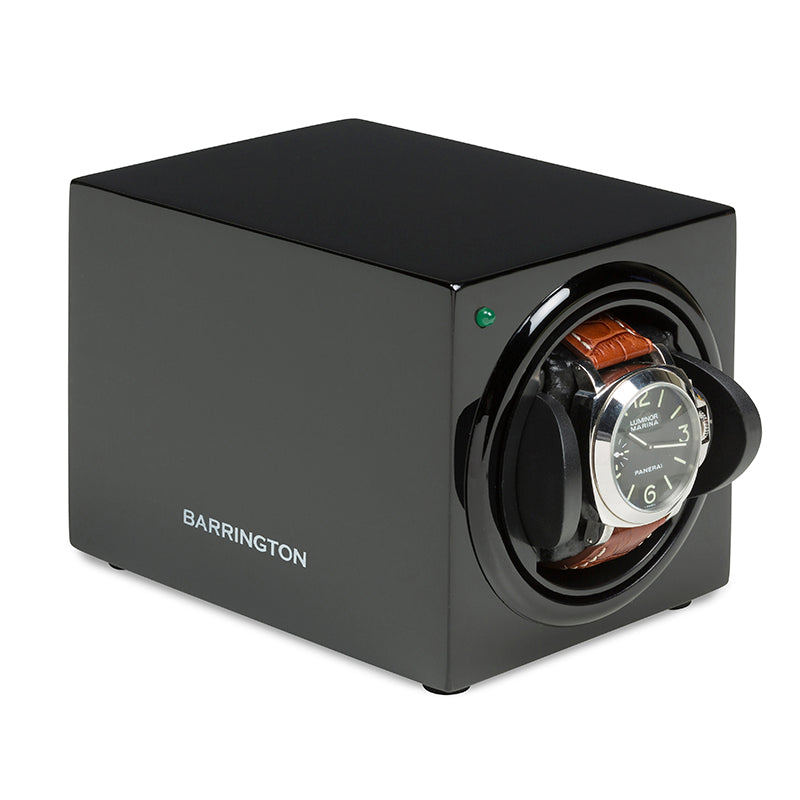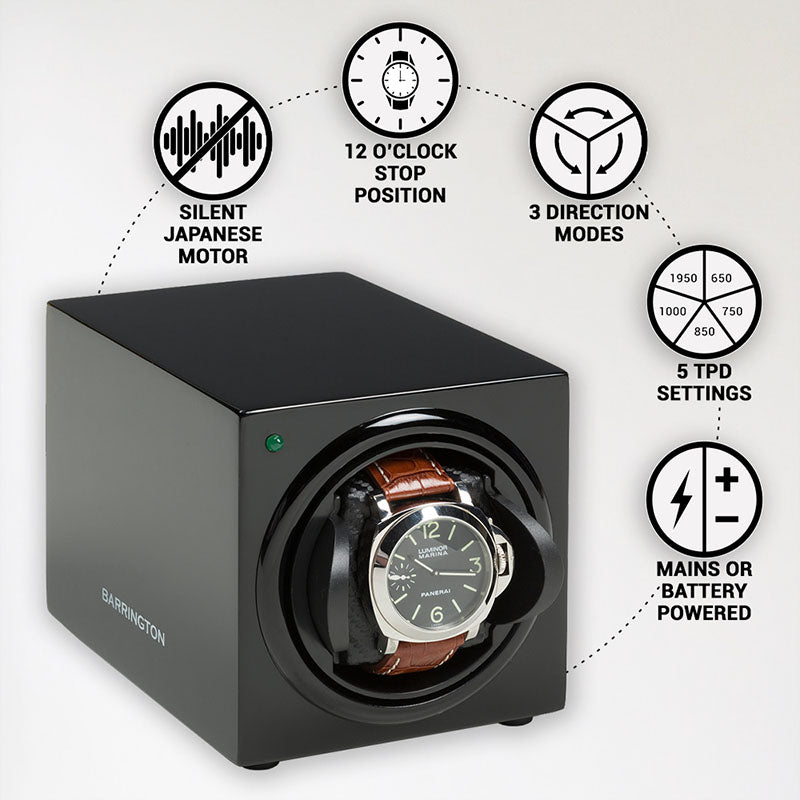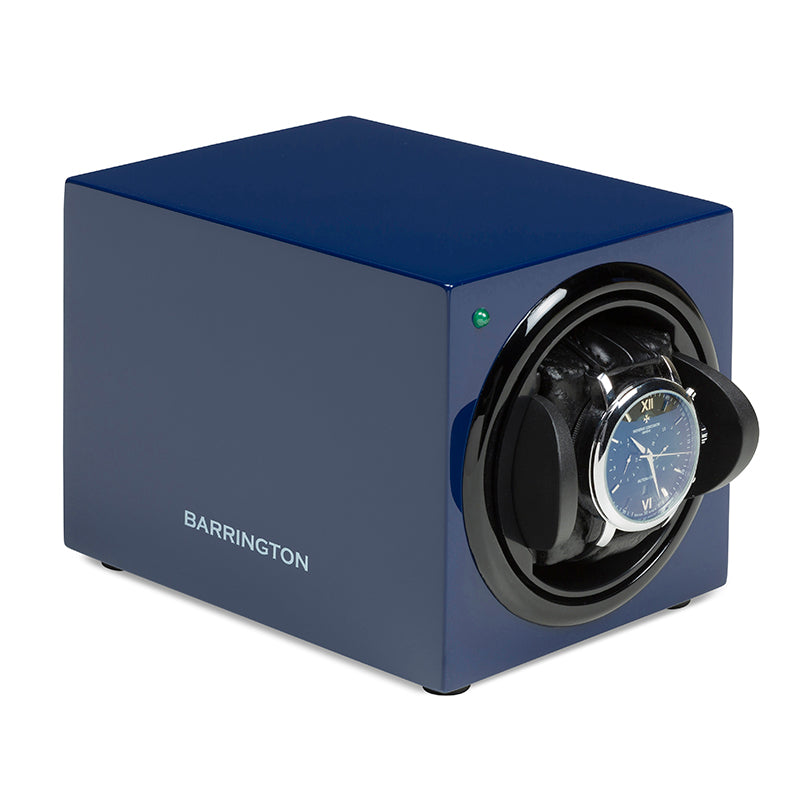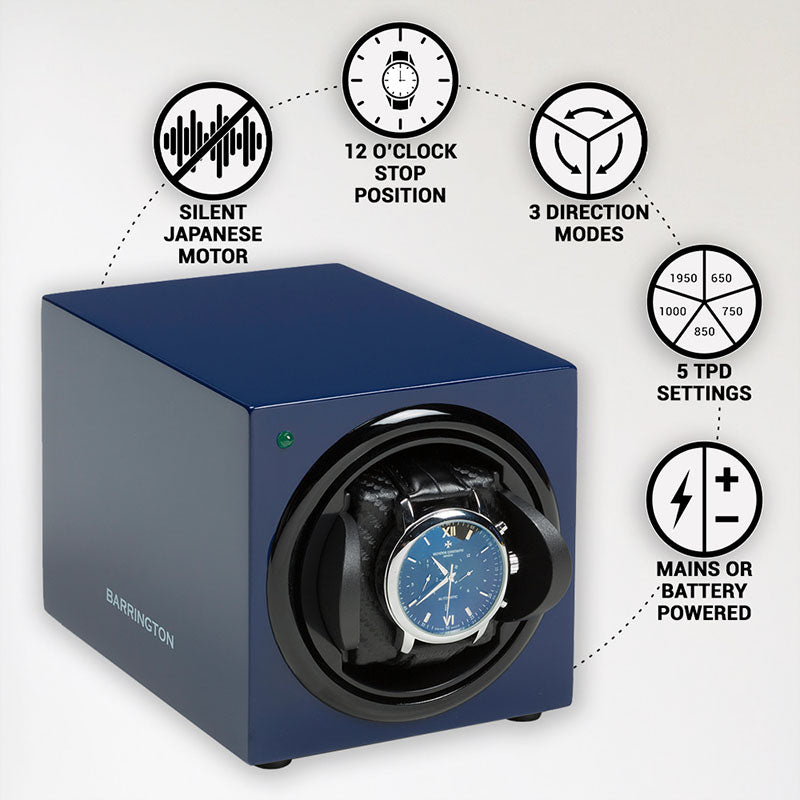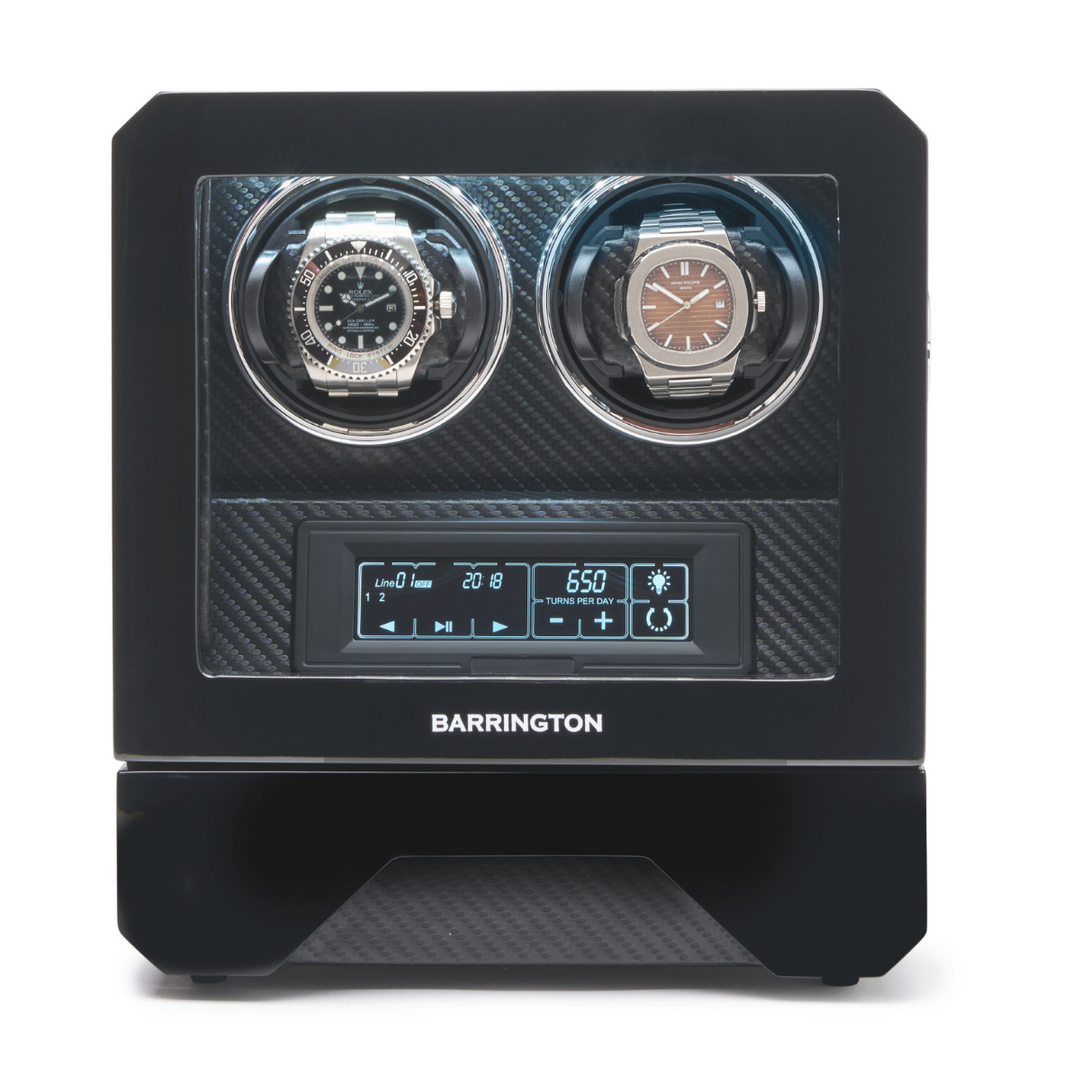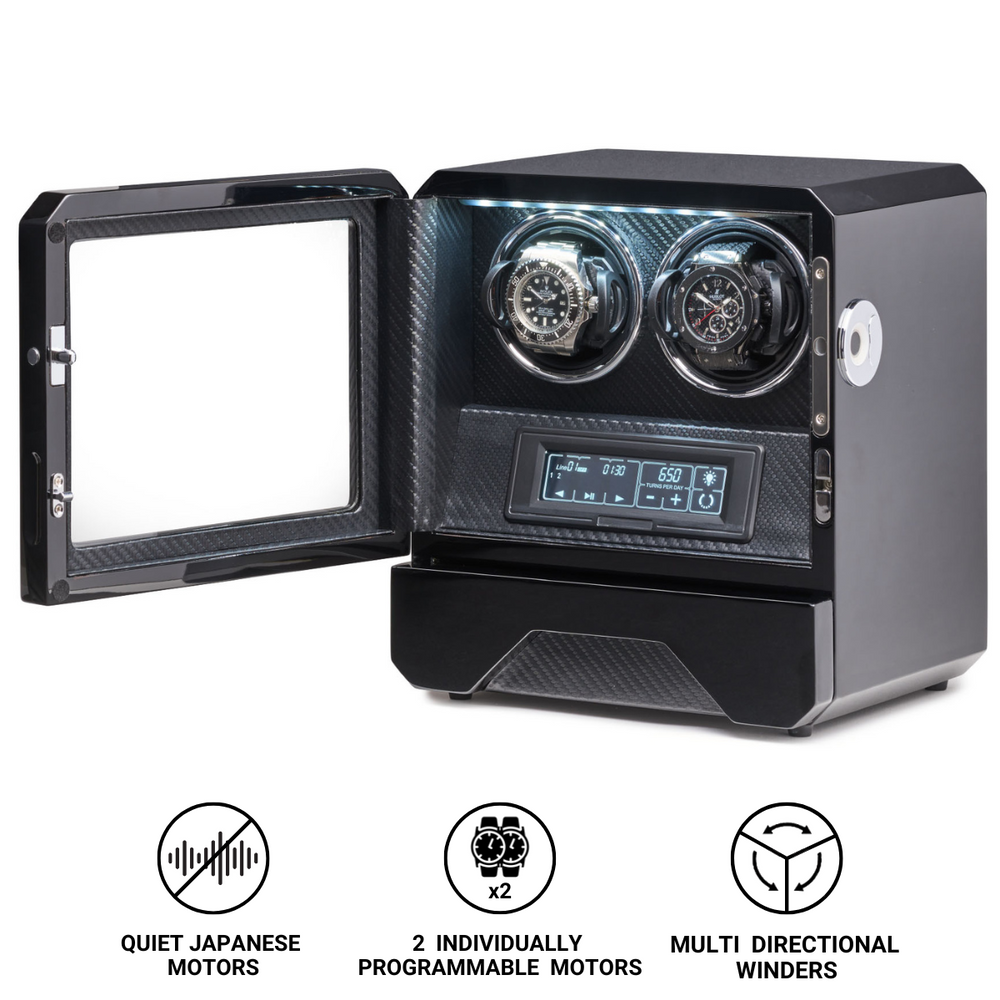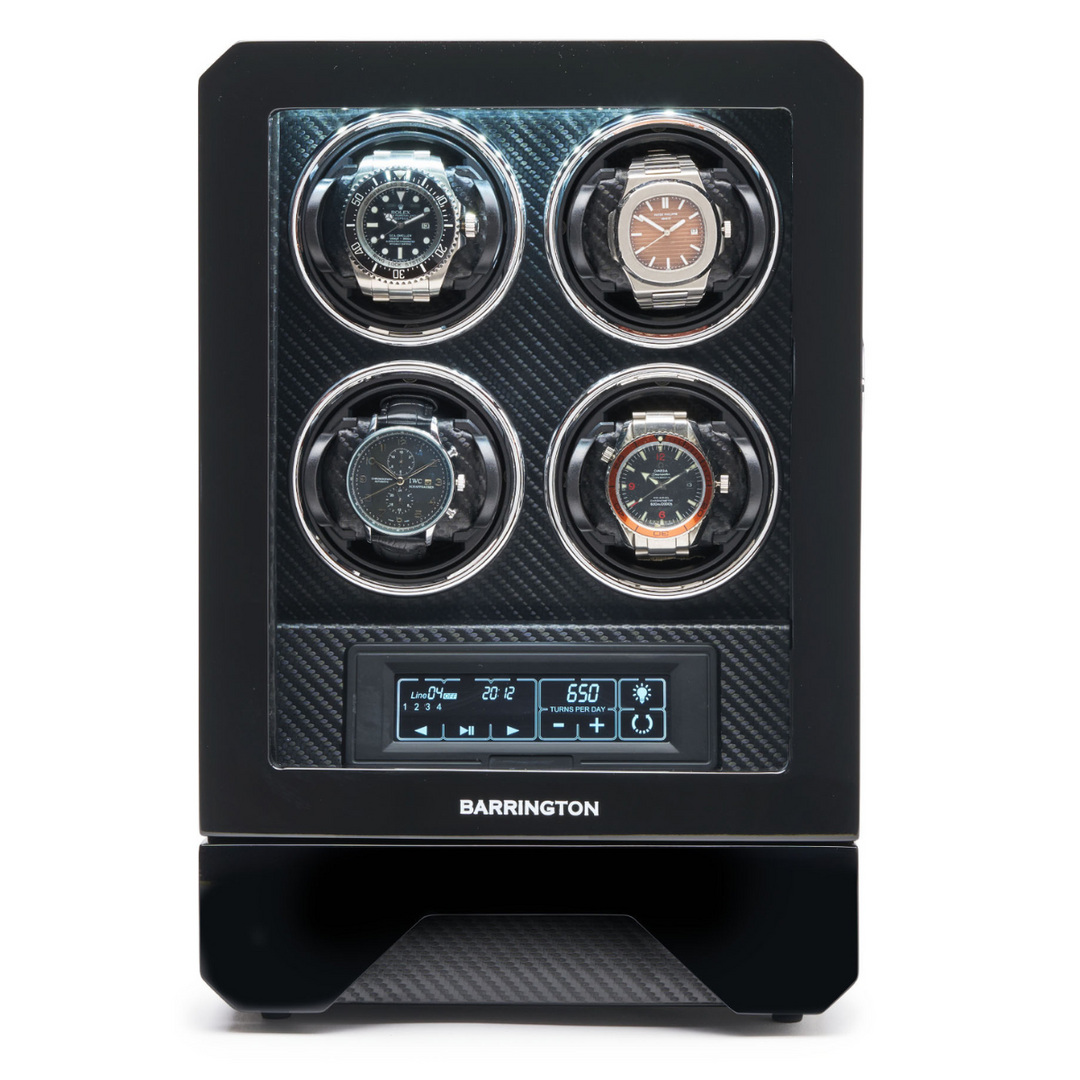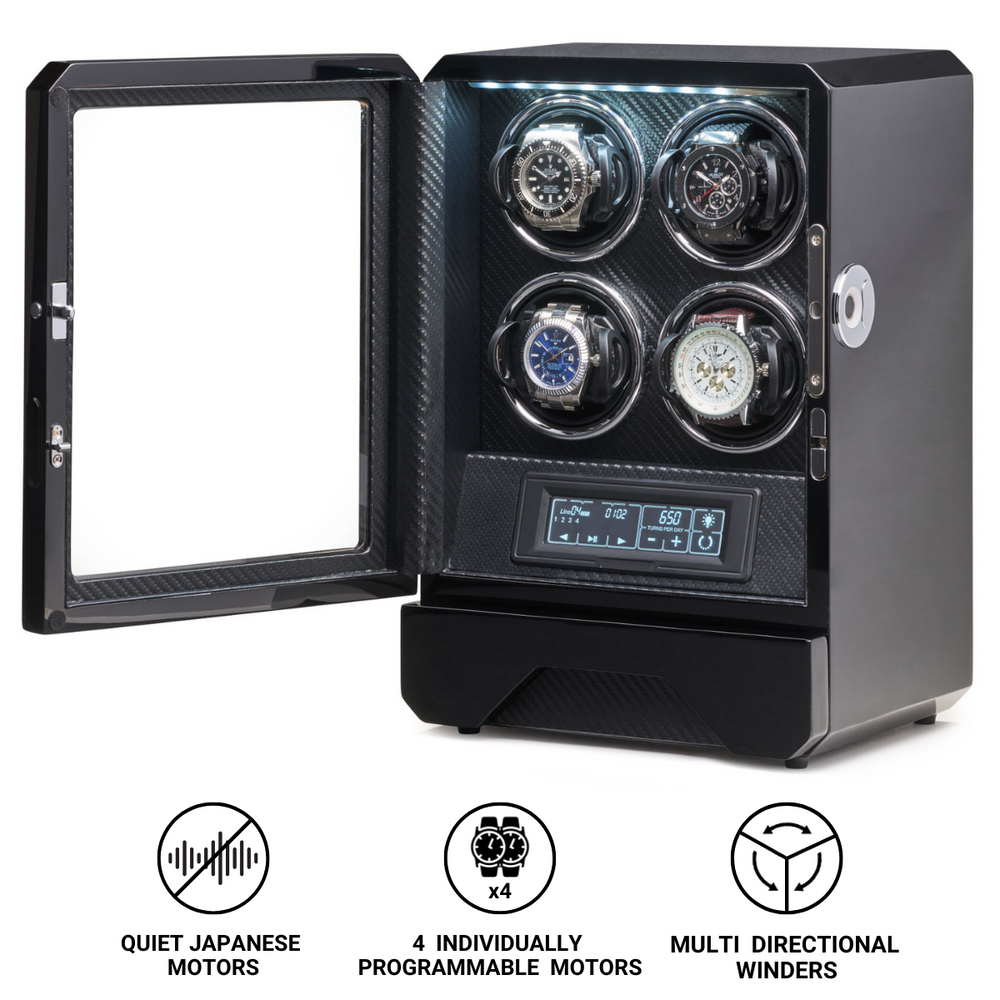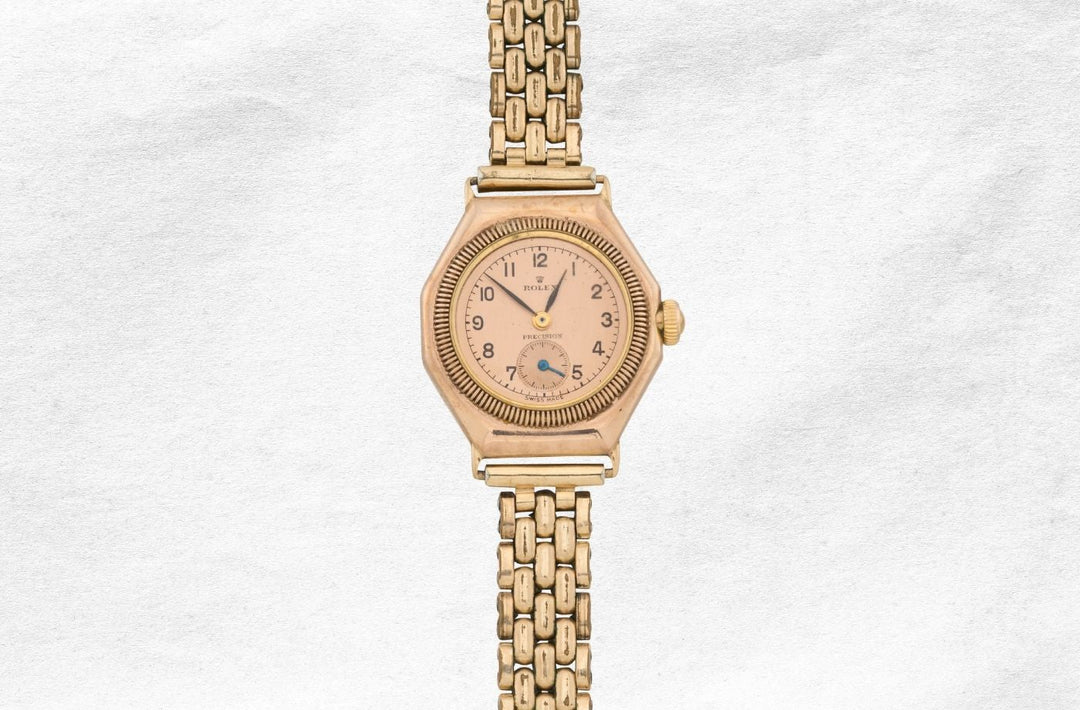A Guide to Waterproof Automatic Watches: Water Resistant or Waterproof?
Water resistance is one of the most important features of an automatic watch, protecting its intricate mechanical movement from moisture, condensation, and long-term damage. Unlike quartz watches, which run on battery-powered circuits, automatic timepieces rely on delicate gears and lubricated components that are particularly vulnerable to water exposure. Even minimal contact with moisture can cause corrosion, reduce accuracy, or lead to costly repairs—making effective sealing a necessity.
A common misconception is that some watches are completely waterproof. Unfortunately, no watch is 100% impervious to water under all conditions. Instead, manufacturers provide water resistance ratings (e.g., 30m, 100m, 300m) to indicate how well a watch can withstand exposure in specific environments. However, these figures do not always correspond to actual depths, as factors such as water pressure fluctuations, temperature changes, and ageing seals can affect a watch’s real-world performance.
Understanding the distinction between water-resistant and waterproof is essential when choosing a timepiece that suits your lifestyle. Whether you need a watch for everyday wear, swimming, or professional diving, selecting the right water resistance level (and ensuring it is maintained through regular servicing) will help preserve its durability and reliability for years to come.
Automatic vs Quartz: Why Choose an Automatic Water-Resistant Watch?
When selecting a watch, one of the most significant decisions is choosing between an automatic and a quartz movement. While quartz watches are favoured for their accuracy and affordability, automatic watches remain the preferred choice among collectors and enthusiasts, prized for their prestige and longevity.
The Difference Between Automatic and Quartz Movements
Quartz watches are battery-powered and rely on an electronic oscillator, regulated by a quartz crystal, to maintain precise timekeeping. They are exceptionally accurate and require minimal maintenance, making them a practical everyday option. However, they lack the intricate mechanical charm and heritage associated with traditional watchmaking.
Automatic watches, by contrast, are self-winding mechanical timepieces that operate through the natural movement of the wearer’s wrist. A rotating rotor winds the mainspring, eliminating the need for a battery. While they do require occasional servicing, automatic watches are engineered to last a lifetime, offering a level of craftsmanship that quartz watches simply cannot match.
Why Automatic Watches Are Prestigious and Reliable
Automatic watches are revered not only for their precision engineering but also for their heritage. Unlike mass-produced quartz movements, an automatic watch represents centuries of horological expertise, with each mechanism meticulously assembled and regulated. Brands such as Rolex, Omega, and Patek Philippe have built their legendary reputations on the excellence of their automatic movements, reinforcing their status as symbols of prestige and refinement.
Beyond aesthetics, automatic watches are exceptionally durable. When well-maintained, they can function reliably for decades, making them a long-term investment. Their reliance on mechanical energy rather than electronics also means they are less vulnerable to battery failures, ensuring consistent performance over time.
How Water Resistance Enhances Mechanical Timepieces
Water-resistant automatic watches combine the timeless elegance of traditional watchmaking with practical durability. Many high-end dive watches—such as the Rolex Submariner or Omega Seamaster—feature automatic movements specifically engineered to withstand underwater conditions.
Water resistance in mechanical watches is achieved through advanced sealing techniques, including:
-
Screw-down crowns for a watertight seal
-
High-quality gaskets to prevent moisture ingress
-
Rugged case construction to withstand pressure changes
These features protect the delicate movement from moisture, dust, and water pressure, making automatic watches ideal for both everyday wear and professional use.
For those seeking a sophisticated yet resilient timepiece, an automatic water-resistant watch delivers the best of both worlds—mechanical excellence paired with real-world durability.
Water Resistance Ratings in Automatic Watches
Water resistance is an essential feature of automatic watches, safeguarding the delicate mechanical movement from moisture, condensation, and pressure fluctuations. However, water resistance ratings can sometimes be misleading, as they do not always translate directly to real-world usage. Understanding these ratings is crucial when choosing a watch that suits your lifestyle and activities.
Understanding Water Resistance Ratings
Below is a breakdown of common water resistance levels and what they mean in practical terms:
|
Water Resistance Rating |
Practical Use |
|
30m (3 ATM) |
Splash-resistant only; not suitable for submersion. |
|
50m (5 ATM) |
Can withstand light swimming but not recommended for prolonged water exposure. |
|
100m (10 ATM) |
Suitable for swimming and snorkelling but not diving. |
|
200m (20 ATM) |
Ideal for recreational diving, water sports, and extended water exposure. |
|
300m+ (30 ATM and beyond) |
Designed for professional diving, with enhanced pressure resistance. |
It’s important to note that these figures represent ideal laboratory conditions rather than real-life situations. Activities such as high-speed water impact, temperature fluctuations, and seal degradation over time can all reduce a watch’s effective water resistance.
How Water Resistance Affects an Automatic Watch’s Durability
Water ingress is one of the most damaging threats to an automatic watch. Even minor exposure can lead to rust, lubrication breakdown, and movement failure, resulting in expensive repairs. To maintain water resistance, manufacturers incorporate:
-
Gaskets (O-rings) – Prevent moisture from seeping into the case.
-
Screw-down crowns – Enhance water resistance by creating a tighter seal.
-
Sealed casebacks – Provide extra protection against pressure changes.
However, water resistance is not permanent. Over time, seals degrade due to exposure to heat, humidity, and wear. Activities such as taking hot showers, using saunas, or exposing the watch to strong impacts can weaken the gaskets and compromise the watch’s ability to keep water out.
For those who frequently use their watches in water, regular servicing is essential. A pressure test and gasket replacement should be part of the maintenance routine to ensure continued protection.
Which Automatic Watches Are Best for Swimming, Snorkelling, and Diving?
Choosing the right level of water resistance depends on your intended use:
-
For swimming & snorkelling. A watch with 100m water resistance or more is ideal. Popular models include: Tudor Black Bay 58, Rolex Explorer II.
-
For recreational diving. Look for watches rated 200m+, such as: Omega Seamaster Diver 300M, Seiko Prospex Turtle.
-
For professional diving. Deep-sea explorers should opt for ISO-certified dive watches with 300m+ water resistance, like: Rolex Submariner, Blancpain Fifty Fathoms
When selecting a water-resistant automatic watch, always consider how you plan to use it. While many everyday watches offer basic water protection, true dive watches are specifically engineered to withstand underwater conditions, ensuring both reliability and long-term durability.
Best Automatic Waterproof Watches
When it comes to automatic water-resistant watches, certain models stand out for their exceptional durability, precision, and engineering. Whether you need a watch for professional diving or simply want a reliable timepiece that can handle water exposure, these models combine outstanding craftsmanship with robust protection.
Rolex Submariner
The Rolex Submariner is one of the most recognised and sought-after dive watches in the world. With 300m of water resistance, a robust Oyster case, and Rolex’s in-house automatic movement, it is designed to perform in challenging underwater environments. Yet, its appeal goes beyond functionality. The Submariner’s clean, timeless design makes it just as suitable for daily wear as it is for deep-sea exploration. Built with high-quality materials and meticulous engineering, it is a watch that retains its value and reliability for decades.
Omega Seamaster
Renowned for its connection to James Bond, the Omega Seamaster Diver 300M is a sophisticated dive watch with a distinctive aesthetic. It features a ceramic bezel, a helium escape valve, and Omega’s Co-Axial Master Chronometer movement, offering remarkable precision and durability. With a water resistance of 300m, it is more than capable of handling underwater adventures, while its sleek design makes it a stylish choice for everyday wear. The Seamaster combines modern technology with Omega’s long-standing heritage in the world of professional diving watches.
Seiko Prospex Diver
For those seeking a high-quality automatic dive watch at a more accessible price point, the Seiko Prospex Diver series is a solid choice. Models like the Turtle, Samurai, and Sumo offer 200m of water resistance, a robust automatic movement, and ISO-certified dive watch capabilities. Seiko has long been respected for its durable, functional timepieces, and the Prospex series delivers impressive reliability without the premium price tag. Its legible dial, strong lume, and rugged construction make it a trusted companion for recreational divers and adventure seekers alike.
Tudor Pelagos
Designed for professionals, the Tudor Pelagos is a true deep-diving instrument. With 500m of water resistance, a helium escape valve, and a lightweight titanium case, it is built for extreme underwater conditions. The in-house automatic movement provides a 70-hour power reserve, ensuring long-lasting reliability. The Pelagos stands out for its modern, utilitarian aesthetic, combining Tudor’s traditional watchmaking expertise with cutting-edge materials and technology. It is a serious dive watch for those who require uncompromising performance.
Each of these watches brings something unique to the table, whether it’s heritage, cutting-edge technology, or exceptional value. While some models prioritise luxury and prestige, others focus on practicality and durability. Choosing the right one depends on individual needs, but all of them represent the pinnacle of automatic water-resistant watchmaking.
How Waterproof Automatic Watches Are Made
Even the most well-engineered water-resistant automatic watch requires proper care to maintain its protective seals and internal mechanisms. Water damage is rarely the result of manufacturing defects; instead, incorrect handling and lack of maintenance are the main culprits. By following a few simple precautions, you can ensure that your watch remains reliable and protected for years to come.
Avoiding Condensation and Moisture Damage
One of the biggest risks to an automatic watch is condensation forming inside the case. This usually happens due to sudden temperature changes—for example, moving from a cold environment into a warm one—or when water enters through compromised seals. To prevent this:
-
Rinse your watch with fresh water after exposure to salt or chlorine to prevent corrosion.
-
Avoid extreme heat (such as saunas and hot showers) since high temperatures can weaken gaskets and make the watch more vulnerable to leaks.
-
Check for fogging under the crystal—if you see any, this is a sign that moisture has entered the case, and the watch should be inspected by a professional immediately.
Handling the Crown Properly
The crown is one of the most vulnerable entry points for water. Even a minor adjustment while underwater can break the watch’s seal, allowing moisture to seep into the movement. To prevent this:
-
Never adjust the crown underwater—this can cause an instant loss of water resistance.
-
Always ensure the crown is screwed down securely before exposing the watch to water.
-
Be mindful when winding or setting the time to avoid accidentally leaving the crown slightly open.
The Importance of Regular Servicing
Water resistance is not permanent. Over time, the gaskets degrade, and the watch’s ability to withstand pressure gradually weakens—especially if it is frequently exposed to water. To maintain its original depth rating:
-
Have the gaskets inspected and replaced every few years.
-
Get a pressure test done periodically to check if the seals are still intact.
-
Ensure the movement is serviced regularly to prevent internal wear from unnoticed moisture damage.
Proper Storage for Long-Term Protection
When not in use, an automatic watch should be stored in a dry environment. Excess humidity can slowly degrade seals and lubricants, reducing its ability to resist water. Keeping your watch away from damp conditions and in a protective case or watch winder will help preserve its longevity.
By following these care guidelines, your automatic water-resistant watch will remain in peak condition for decades, ensuring both its mechanical precision and durability stay intact.
Storage & Winding Solutions
Proper storage and maintenance are crucial for ensuring the long-term accuracy and reliability of an automatic watch. If left unworn for an extended period, the movement will eventually stop, requiring manual winding and resetting before use. A watch winder eliminates this inconvenience by keeping the mechanism in continuous motion, replicating the natural movement of the wrist. This not only ensures your watch is always ready to wear but also helps maintain the lubrication of internal components. Barrington Watch Winders provide an elegant and efficient way to keep your timepieces in prime condition, combining functionality with a refined aesthetic.
Barrington Single Winder - Midnight Blue
(The Barrington Single Watch Winder in Midnight Blue is a refined blend of style and functionality, designed to keep your automatic timepiece in peak condition. Its ultra-quiet Japanese motor ensures whisper-quiet operation, making it perfect for use in any setting, including the bedroom. With customisable rotation settings—clockwise, counter-clockwise, or alternating—it mimics natural wrist movement, while multiple Turns Per Day (TPD) options cater to the unique needs of different watch mechanisms.
Engineered for versatility, this winder operates on either AC mains or AA batteries, offering complete flexibility. The ‘Jump’ feature allows multiple winders to be connected and powered from a single source, creating a sleek, stackable display. Compact yet powerful, it measures just 11.5cm x 12cm x 16cm, making it a discreet yet indispensable accessory for any watch collector.
Designed with comfort in mind, it comes with a choice of Standard or Flex cushions to accommodate different wrist sizes. Whether for daily convenience or long-term watch preservation, this winder is the perfect companion for your favourite timepiece).
Barrington Special Edition Single Winder - Grey Koto
(The Barrington Special Edition Single Watch Winder in Grey Koto is a sophisticated blend of premium craftsmanship and advanced functionality. Designed for collectors who appreciate both form and function, its sleek grey wood-grain finish adds a refined touch to any space. Featuring a precision-engineered Japanese motor, this winder operates in near silence, ensuring a seamless experience whether placed in a bedroom, office, or display case.
With customisable rotation settings—clockwise, counter-clockwise, or alternating—it perfectly mimics natural wrist movement, keeping your automatic timepiece in optimal condition. Adjustable Turns Per Day (TPD) options (650, 750, 850, 1,000, or 1,950) cater to a variety of watch mechanisms, providing tailored care for even the most intricate calibres.
Designed for versatility, it runs on AC mains or AA batteries, allowing flexible placement. The ‘Jump’ feature enables multiple winders to be connected and powered from a single source, creating a visually stunning and efficient display. Compact yet powerful, this winder measures 11.5cm x 12cm x 16cm, making it the ideal companion for any high-end automatic watch).
2 Watch Winder
(The Barrington Dual Watch Winder combines advanced technology with a sleek, luxury design to keep your automatic watches in pristine condition. Featuring individually programmable rotors, it allows you to set customised rotation directions and Turns Per Day (TPD) for each watch, ensuring the perfect winding experience. The ultra-quiet Japanese motors provide near-silent operation, making it ideal for use in bedrooms, offices, or display cabinets.
A standout feature is the fingerprint scanner, offering secure access to your timepieces, alongside a touchscreen display and remote control for effortless adjustments. The carbon-fibre styled interior and high-gloss exterior add a touch of sophistication, while built-in LED downlighters showcase your watches in style.
Designed for convenience, this winder also includes an integrated storage drawer, perfect for keeping additional timepieces or accessories. Measuring 26.5cm x 18.5cm x 23.5cm, it operates on AC mains power with international plug fittings, making it a versatile and elegant addition to any watch collection).
In addition to keeping your watch wound, a high-quality watch winder offers a secure and stylish storage solution. It protects your timepiece from dust, humidity, and accidental damage, preserving both its appearance and performance. Whether you own a single cherished timepiece or an expanding collection, Barrington’s watch winders are designed to blend advanced technology with sophisticated craftsmanship, ensuring your watches remain accurate, well-maintained, and beautifully presented.
Conclusion
An automatic water-resistant watch is the perfect combination of traditional craftsmanship and modern durability. It offers a timeless design, mechanical precision, and the added benefit of protection against water exposure. Whether you need a watch for daily wear, water activities, or professional diving, an automatic timepiece provides reliability and longevity without the need for a battery.
The right choice depends on how you plan to use your watch. A 100m-rated model is ideal for everyday wear and occasional swimming, while a 200m or 300m dive watch is better suited for water sports and recreational diving. For professional divers and extreme conditions, watches with 500m+ water resistance, helium escape valves, and reinforced cases offer the highest level of protection.
To keep your automatic watch performing at its best, regular servicing is essential. Over time, gaskets degrade, and water resistance can weaken, making pressure testing, seal replacement, and movement maintenance necessary to prevent moisture damage. A high-quality watch winder can also help by keeping your timepiece running when not in use, ensuring it stays accurate and ready to wear.
At Barrington Watch Winders, we specialise in premium winding and storage solutions that protect and maintain automatic watches. Whether you’re a collector or buying your first timepiece, our expertly crafted winders help keep your watches in top condition. Explore our collection today and find the perfect accessory to complement your automatic watch.
FAQ: Understanding Waterproof Automatic Watches
Are automatic watches truly waterproof?
No watch is 100% waterproof forever. While some automatic watches, particularly professional dive models, offer high levels of water resistance, all timepieces are subject to wear and tear. The gaskets and seals that protect the movement degrade over time, meaning regular servicing is essential to maintain water resistance. It’s always best to follow the manufacturer’s guidelines and avoid unnecessary exposure to water.
What water resistance rating should I look for in an automatic watch?
The ideal water resistance rating depends on how you plan to use your watch. A rating of 30m or 50m is only suitable for everyday splashes, while 100m allows for swimming but not diving. If you engage in snorkelling or water sports, 200m is recommended, whereas serious divers should consider watches rated 300m or more, such as the Rolex Submariner or Omega Seamaster.
Can I shower or swim with my automatic watch?
Even if a watch is rated at 50m or 100m, showering with it is not advisable. Hot water and steam can cause the metal components to expand at different rates, potentially weakening the seals. Similarly, swimming with a lower-rated watch can lead to water ingress, especially if the crown is not fully secured. For regular swimming, a 200m-rated watch is a safer choice.
How often should I service my waterproof automatic watch?
Most watchmakers recommend servicing an automatic watch every 3 to 5 years, but if you frequently expose it to water, more frequent checks are wise. Over time, rubber gaskets dry out and lose their effectiveness, which increases the risk of leaks. Regular pressure testing by a professional ensures that your watch remains properly sealed and water-resistant.
What is the difference between a screw-down crown and a push-pull crown?
A screw-down crown provides superior water resistance by locking tightly into the case, preventing water from seeping into the movement. This feature is common in dive watches such as the Tudor Pelagos or Rolex Submariner. In contrast, a push-pull crown does not offer the same level of protection and is typically found in watches with lower water resistance ratings. If you need a watch for serious water exposure, always opt for one with a screw-down crown.


